Russian Coney Island ( 1800s ) Stolen History Org
Old Plantation: Coney Island and Precursors Re-created the "Romance of Life in the Sunny South"
The 1901 Pan-American Exposition in Buffalo--a major city back then!--was a significant influence on Coney, since that's where Skip Dundy and Frederic Thompson became "Mighty Men of the Midway," designers and operators of an enormous range of attractions.
The photo (via the fantastic Doing the Pan site) here focuses on the Aerio Cycle, a Thompson-devised mechanical fun device, which he had invented for a previous World's Fair, the Tennessee Centennial in Nashville, and would eventually make its way to Coney Island.
But it's hard not to notice, stage left, Old Plantation, a very popular--and blatantly racist, albeit not by 1901 majority standards-- attraction, for which Thompson and Dundy were also responsible.
What was Old Plantation?
Thanks to the Uncrowned Queens Institute for Research & Education on Women, Inc. and its Uncrowned Community Builders Project, which focuses on the Black history in Western New York, we learn that the Old Plantation tried hard to recreate the pre-Civil War South, including "cotton and corn fields with real growing crops and slave cabins."
One contemporary description said the attraction required the "services of 250 genuine southern cotton field Negroes in the portrayal of life on the plantation," while another called them "darkies who vary in age from tiny pickaninnies to white-headed uncles and aunties."
Nightly minstrel shows, the Uncrowned project tells us, depicted scenes from plantation life, with performances by singers, banjo players, dancers and "Laughing Ben," a 96-year-old former slave.
That means he was born in 1805 and, likely had spent nearly two-thirds of his life enslaved. That's ugly stuff, and a reminder of the palpable legacy of slavery.
What happened at Coney Island?
Many attractions from Buffalo came to Coney Island, notably Luna Park, the stunningly advanced amusement park that Thompson and Dundy opened in 1903.
But none of the Luna Park advertisements I found mentioned Old Plantation, so I suspect it didn't move to Brooklyn from Buffalo.
Still, they apparently tried. A Nov. 23, 1902 article from the Brooklyn Daily Eagle, previewing the amusement park under construction, said: "The romance of life in the Sunny South before the war will be portrayed in a reproduction of an an old plantation, showing scenes in the cotton fields and the old time darky pastimes and dances."
Of course, it was not much of a "romance" for the people who were enslaved, and it's awful to think the majority culture took pleasure in it.
Moving to Steeplechase
A few years later, however, Steeplechase Park, a rival amusement park, was advertising Old Plantation as one of several attractions. See the excerpt at right from a Steeplechase advertisement in the June 30, 1906 New York Evening World, and look at the bottom.
Old Plantation was presented as simply one of many Steeplechase features, including the ferris wheel, the "Big See-Saw" (the updated version of the Aerio Cycle), and the Razzle Dazzle.
It's unclear if Old Plantation lasted past a year or two. The sole contemporary account I could find was from the June 30, 1907 Brooklyn Daily Eagle, which quoted a Steeplechase representative as saying, "In the performance called 'The Old Plantation,' the performers are all negroes, and some of them are very clever. They are professionals, having played with Williams and Walker and other colored stars."
(That's a reference to the acclaimed vaudevillians George Walker and Bert Williams, cited in this essay for aiming "to tweak the popular music idiom of the day—which was dominated by a derogatory genre known as 'coon songs'—to render such songs either benign or ironic.")
A troubling history
It didn't start with Old Plantation. Consider the image at right from the July 2, 1895 edition of the Brooklyn Daily Eagle. Even before the amusement parks emerged, during a time when circuses put "exotic" people on display, an exhibition was marketed of "Black America," with "500 Real Southern Negroes."
(That was in "South Brooklyn," which at the time was considered the area around Gowanus/Sunset Park; in this case, Ambrose Park was at Third Avenue and 37th Street. Brooklyn initially was the central-west town, later city, within Kings County.)
In the New York Times, Sam Roberts wrote a 2014 article about this phenomenon, noting that there's no record of any objection at the time. One headline at the time, he noted, cited the “Fun-Loving Darky of Old Slavery Days.”
Interestingly enough, the promoter--according to researcher David Fiske--aimed to show "the better side of the colored man and woman of the South,” emphasizing their musical talents.
Fiske notes that white locals were encouraged to visit Black America by their pastors, and it was, according to one 1947 article, “a first effort to make some presentation of the Negro as a person." That said, Fiske wrote that the absence of whites in the cast meant the absence of slavers: "Black America served not as a documentary of the life of blacks on antebellum plantations, but as a showcase of the talents and versatility of black people."
Around the turn of the century, in fact, the brand name Old Plantation was used to sell both coffee and peaches, according to advertisements I found.
Unfortunately, there's not a huge gap between that and the long-running brand of Aunt Jemima, whose operators only this year recognized they needed to stop profiting from racist stereotypes.
A Harper's Weekly article from just four months after Luna Park first opened in May of 1903 captures the amusement park's transformational impact on both Coney Island and the worldwide amusement industry:
"At just the time when it was needed, when the attractions had grown a trifle monotonous, two young men came out of the West and, without any blowing of horns, erected as if in a night an amusement park which has not its counterpart anywhere else on earth. The thinking visitor, after he has seen the many features, after he has laughed at the helter-skelter, and watched the Cingalese dancers, and made a trip to the moon, and another via the submarine route to the North Pole, will glance back after leaving the really picturesque entrance and marvel at the inventive genius that has made all this possible."
Luna Park was founded by Frederic Thompson and Elmer 'Skip' Dundy
Thompson, an architect by training, was born in Nashville, Tennessee, in 1872. His exceptional creative ingenuity and marketing flair were rivaled only by his equally exceptional disregard for financial prudence.
Dundy, born in 1862 in Omaha, Nebraska, was Thompson's perfect complement. He naturally was an astute and crafty businessman with a knack for raising money, but lacked the artistic creativity.
Thompson and Dundy first met in 1898 at the midway of the Omaha World's Fair, known as the Trans-Mississippi Exposition.
Midways had by this time become a major attraction at world's fairs, popularized by the original Midway at the Columbian Exposition of 1893.
Dundy, after graduating from college in Nebraska, worked locally as a law clerk in the federal court where his father served as judge. Undoubtedly excited by the massive fair, Dundy agreed to provide the financial backing for Henry Roltair's two amusement concessions, 'Havana and the Maine' and 'The Mystic Garden'.
Thompson was hired for the architectural design for Roltair's shows, and also redid a failing underground mine shaft ride into a somewhat primitive show of his own called Darkness and Dawn. Roltair would later go on to design Dreamland's major illusion spectacle, Creation, as well as End of the World and other major illusion-based shows.
Dundy made a profit on Roltair's two concessions and then risked it all by purchasing numerous concessions for a repeat of the fair the next year.
Few visitors materialized and Dundy lost $46,000, an incredible sum at the time.
But Dundy had seen the even larger sums that could be made in the midways at world's fairs and was undeterred. He also devised a surprising plan based on his sharp legal eye.
The second time Thompson and Dundy met was in Buffalo, New York, ahead of the New York World's Fair of 1901. This encounter must have quickly turned sour when Thompson realized that Dundy himself was submitting a concession bid using Thompson's own Darkness and Dawn. Dundy pointed out that Thompson had failed to copyright the show.
An enraged Thompson, not finding as much comfort as Thompson in this legal oversight, thought he still would win the concession based on some improvements he had made.
Dundy again outmaneuvered Thompson by politicking his way to success behind the scenes.
Thompson, at this point likely just as flabbergasted as impressed by the unimposing Dundy, realized that his and Dundy's talents would be far better used in combination than in competition.
Thompson offered to share his ideas for a ride far superior that Darkness and Dawn if Dundy would agree to work on it with him as an equal partner and showcase it in the Buffalo World's Fair. Dundy agreed, cementing a partnership that would last until Dundy's death.
At the Buffalo World's Fair, Thompson and Dundy showcased several attractions including Thompson's latest idea, an electricity-powered ride called A Trip to the Moon. The ride was inspired by Jules Verne's 1865 book, 'From the Earth to the Moon'.
A Trip to the Moon became the runaway hit of the exposition.
Passengers entered a spaceship called the Airship Luna, appropriately named as luna means moon in Spanish.
They fastened their seatbelts, and rode the Airship Luna all the way to the moon, where they landed with a thump. Complete with simulated rocking motions, sound effects and changing backdrop scenery that gradually showed the Earth getting smaller through the plane's windows and asteroids whizzing by, the ride was exceptionally realistic.
Once on the moon, the ship's pilot invited the passengers to walk around the Mars-like terrain and scenery. For good measure, oddly-dressed midgets as well as a giant were cast as moon people.
Passengers then returned to the ship and made their way back to Earth. Thompson had the imagination to create all of this before planes even existed. It would still be three years before the Wright brothers took their historic flight at Kitty Hawk in December of 1903.
During the fair, Thompson ingratiated himself with Dundy and Dundy's wife by pulling a clever stunt.
Thompson found out that Dundy had promised to bring home to his wife any gold coins collected at the concessions on his wife's birthday.
Thompson ran out to the local banks the day before and bought a large amount of coins, and replaced the money in the concession boxes with the equivalent in coins that day.
Dundy's wife was amazed when she received approximately $900 in gold from her husband that night.
Dundy himself probably liked Thompson's gift just as much his wife did, given that during the financial Panic of 1901, while at the fair, Dundy had hung a sign outside the partners' office reading, "The earth may quake, And banks may break, But Skip Dundy, Pays in gold."
When the Buffalo World's Fair closed in early November of 1901, Dundy wanted to head to St. Louis to secure concessions ahead of the next major world's fair, the Louisiana Purchase Exposition.
The fair was scheduled to open in 1903 to commemorate the centennial of the Louisiana Purchase of 1803.
Sea Lion Park's Paul Boyton was there securing a concession for his Chutes ride.
Thompson, however, had other plans. He headed to Coney Island to negotiate a deal at the invitation of George Tilyou, the owner of Steeplechase Park. Tilyou had seen A Trip to the Moon while scouting the Buffalo World's Fair for new amusements. They agreed to move A Trip to the Moon, the Giant See-Saw and several other rides to Steeplechase Park for the 1902 season.
Thompson's decision proved even better than expected in hindsight because the St. Louis World's Fair ended up opening one year late, which would have left the partners with little to do in the intervening time.
The West Brighton area of Coney Island was, by this time, a leading amusement and leisure resort, with over 23 million visitors in 1901 alone.
Still, the move was riskier than it would at first appear, which perhaps explains why Dundy was more hesistant to head to Coney Island than the ever-optimistic Thompson.
West Brighton was not yet the developed, family-friendly playground into which Luna Park eventually transformed it. Prior efforts to draw large, reputable crowds to West Brighton from the more upscale Brighton Beach and Manhattan Beach areas had failed miserably. The famous cornet player Levy had been hired away from Gilmore's band at Brighton Beach, but lasted only one season in West Brighton.
Many predicted that A Trip to the Moon's relatively high ticket price would also pose a challenge for the generally middle-to-lower-class West Brighton patrons.
Against these odds, A Trip to the Moon proved to drew crowds to Steeplechase at West Brighton and a complete success. After just one season, Thompson and Dundy became well-known throughout New York City. They also finally had some meaningful savings of their own, in spite of having to pay Tilyou 40% of profits.
In the late summer, Thompson settled in for the long haul at Coney Island and purchased a house in the rapidly-developing neighborhood of Bensonhurst, Brooklyn, on 85th Street, near 21st Avenue
Helter Skelter, Babbling Brook and Cascades, shortly after opening in 1903.
Thompson and Dundy's vision when they arrived at Coney Island clearly went well beyond splitting profits with Tilyou in exchange for space. The 1902 season was still in full swing when newspapers reported on the morning of August 13th that Thompson had agreed to buy out Sea Lion Park from Paul Boyton.
Thompson purchased from Boyton the land that Boyton owned outright, and assumed Boyton's leases through 1925 for the remainder of the twenty-two acre lot from the Sea Beach Land Company and two private individuals.
Boyton agreed to hand over all of Sea Lion Park on October 1, 1902. The park came with literally everything, including Boyton's sea lions and his most recent addition, Tops 'Topsy' the elephant. Topsy had a troubled history as an abused animal at Forepaugh's Circus, culminating in her killing a spectator, coincidentally from Brooklyn, who aggravated her by feeding her a lit cigarette and other inappropriate things.
Forepaugh's Circus eagerly sold Topsy to Boyton in the early spring of 1902, ridding themselves of the 'bad', 'man-killing' elephant. Topsy would prove to be an issue for Thompson and Dundy just a few months after taking ownership of Sea Lion Park.
Thompson and Dundy called their new park Luna Park. Luna had a double meaning; it was not only a reference to the Airship Luna from a Trip to the Moon, but also Skip's sister's name. The pair had not a moment to lose as the start of the following season in May 1903 was just nine months away.
Several sources state that Thompson and Dundy left Steeplechase because Tilyou significantly raised his proposed stake in their profits for the 1903 season. This account seems doubtful based on the mid-season timing of the agreement with Boyton and also because Thompson and Dundy were able to start construction as soon as Boyton handed over the keys just six weeks later.
They clearly had spent much of 1902 negotiating for a large property in West Brighton, lining up loans and designing the park's architecture and rides. Dundy had gone to work raising some of the $1,500,000 necessary to finance Luna Park, whose investors included the steel tycoon John 'Bet-a-Million' Gates.
In late August of 1902, Thompson left his architectural drawings with Dundy and headed to Europe to scope out the latest rides, in the hopes of finding other novelties to add to Luna Park.
In the drawings, Thompson paid homage to the Chicago World's Fair of 1893, home of the first midway. Most of Luna Park, including its large main gate, would be painted white, like the fair's 'White City'. Thompson also borrowed the concept of a 'Court of Honor, with numerous colonnades and peristyles, to aid in the architectural effect'. A large, elliptical pool stood in the middle of the park, bookended by Boyton's Chutes on one end and Luna's 'Electric Tower' on the other end, named after the Electric Tower of the 1901 Buffalo World's Fair.
The colonnades also connected most of the buildings such that visitors could walk from building to building without getting wet if it rained. An additional thirty-two towers would complete the scene, all outlined in light bulbs.
Thompson's imagination took Luna's overall architecture well beyond White City. Red was thrown into the park's color palette as Thompson added hearts all around the park, calling Luna the 'Heart of Coney Island'.
He also completely disregarded the straight lines and refined feel of the neoclassical architectural movement of the time, instead creating his own fantasy-like style of curves and spirals and fountains that went beyond anything that even Orientalism or Art Nouveau had done. Overall, Luna Park would be unlike anything people had seen.
Luna Park Wormwood's Monkey Theater
Luna Park ElephantsDundy's elephants giving free rides to orphans. Note the ubiquitous American flags.
Luna Park was hailed by many reformers as the key component of transforming West Brighton from a licentious, vice-ridden area into a respectable seaside resort.
In Luna Park, they saw a large, permanent midway centered around moral amusement rides and cultural exhibits like reproduction foreign villages and aquariums.
Certainly, these would draw the crowds away from the Bowery's belly dancers, which all too often seemed to distract otherwise moral male citizens. Reformers were already trying to cajole the government into making a large, family-friendly park out of the Bowery.
Politicians astutely said they would see to it, if only the reformers could raise the money to buy out all of the businesses in the Bowery, which of course would never happen.
Reformers also tried to shut down the Bowery by proposing laws that any shows given on Sundays in West Brighton would have to be done at no profit.
Though they still grumbled about Luna Park offering acrobat acts on Sundays, they overall must have been pleased, as belly dancers were no match for elephants and trips to the north pole.
On October 5, 1902, with construction of Luna Park already underway, Dundy paid Tilyou a visit with the aim of finalizing the sale of Thompson's and Dundy's Giant See-Saw.
Earlier, Tilyou had said that he wanted to keep the ride, and Dundy had offered to sell it for $20,000. By this point, Tilyou must have grown thoroughly irritated by persistent talk of the yet-to-be-built Luna Park outshining his Steeplechase in every way.
Tilyou made a comment implying that Dundy must be having trouble raising money to build Luna Park, because why else would Dundy be so eager to finalize the Giant See-Saw sale?
Hitting a nerve, Dundy immediately retorted that he needed neither Tilyou's money nor the ride, 'and to show you my gameness, I will toss you a coin to see whether you pay me $12,500 for it or whether you pay me nothing'. Dundy handed Tilyou a nickle and Tilyou 'won' the bizarre ride for free.
Dundy was not heartbroken as it seems like he never had any intention of placing such a large, relatively boring ride in his new, exciting Luna Park. Tilyou ended up using the ride as giant billboard to advertise Steeplechase rather than take it down after people stopped riding it.
By late October of 1902, the Trip to the Moon building at Steeplechase was being disassembled and Topsy the elephant was taking large loads of wood to Luna Park to be reused.
A greased track of wood was constructed running down Surf Avenue for Topsy to drag the Airship Luna in one piece to its new home. Unfortunately, the airship was too heavy for Topsy, who couldn't budge it.
Topsy's aggressive young trainer, William Alt, responded by stabbing Topsy between the eyes and in the sides with a fork. When a police officer intervened, Alt set Topsy loose, culminating in Alt's arrest for disorderly conduct. Topsy later was able to move the airship with the aid of a team of horses.
By late November, over five-hundred workers were tearing down all of Sea Lion Park except for Boyton's Chutes, which was to be the only surviving ride of Luna's predecessor.
When reporters stopped by, they found Thompson himself, now back from Europe, working on the nearly-complete, upgraded version of A Trip to the Moon, which at 70 feet high and 50,000 square feet in total footprint, would be larger than the original.
Thompson explained his vision to a reporter from the Brooklyn Daily Eagle who was doing a story on how Luna Park would transform the current, still somewhat-seedy West Brighton area into a civilized 'New Coney Island':
"Of the new features, the most important will be an illustration of Jules Verne's 'Twenty Thousand Leagues Under the Sea', which will cover 55,000 square feet of ground, and a naval spectatorium, which will have a water area of 60,000 square feet. Beside these we will have many novelties, including the River Styx, the Whirl of the Town, Shooting the White Horse Rapids, the Grand Canyon, the '49 Mining Camp, Dragon Rouge, overland and incline railways, Japanese, Philippine, Irish, Eskimo and German villages, the infant incubator, water show and carnival, circus and hippodrome, Yellowstone Park, zoological gardens, performing wild beasts, sea lions and seals, caves of Capri, the Florida Everglades and Mont Pelee, an electric representation of the volcanic destruction of St. Pierre."
The White Horse Rapids were Thompson's original ambitious idea for a complete makeover of Boyton's chutes.
The chutes would be made to look like the Rocky Mountains, and three times as much water would carry specially-redesigned boats into the lagoon. The chutes' background scenery would imitate Yellowstone Park, complete with geysers. The water coming down the mountain would feed into the old mill ride. Luna Park would also continue Boyton's tradition of training animals, including elephants, to ride down the chutes.
Thompson also planned to display historical curiosities like the original log cabins that Lincoln and Jefferson Davis had been born in, similar to what Barnum had done in his famous museum.
Dundy left his mark on Luna Park's design, too. He loved the circus and made Thompson put in a large ring in Luna's center for continuous acrobatic performances and animal shows. Water buffalo would carry children through the Igorrote village, with elephants, camels and ponies also stationed throughout the park.
Luna Park remodeled its entrance for the 1905 season as competition with Dreamland heated up. Note the slogan change to 'The Heart of Coney Island'.
Topsy the Elephant at Luna ParkTopsy the Elephant Building Luna Park, Fall 1902
The Sad Story of Topsy, the 'Bad' Elephant that Built Luna Park
Dundy, fascinated by elephants, took it upon himself to amass the largest privately-owned herd in the world. He let them roam around his new park under supervision and give rides to children. Photographs of Luna Park's Surf Avenue entrance in 1904 show signs prominently advertising the elephants. Sadly, Topsy would not be among them.
Topsy's trainer at Luna, William Alt, was arrested again in early December when a woman claimed that she saw Alt drunkenly abuse Topsy as Topsy pushed free a heavy lumber cart that had gotten stuck in the mud on West 11 Street near Surf Avenue. As Alt was led into the police station after initially resisting arrest, Topsy innocently tried to enter, too, to everyone's surprise. Thompson and Dundy dismissed Alt shortly thereafter when he reportedly gave Topsy orders to chase after a construction crew of Italians at Luna Park. These ongoing issues may help to explain why Thompson and Dundy sent each of the local police precinct's fifty-eight officers a turkey on Christmas Eve, 1902. The police officers kindly distributed the turkeys to needy families.
Alongside unverifiable reports that Topsy had killed three people in the last three years, Topsy's fate was sealed. In spite of Dundy's love of elephants and Topsy's usefulness in moving heavy loads during Luna's construction, Thompson and Dundy determined that Topsy could not safely be kept at the park.
With her reputation as a 'man-killing animal' and much negative publicity preceding her, Thompson and Dundy were unable to give Topsy away, even to the ASPCA or zoos. They decided to euthanize her, but faced the challenge of how to put down a grown elephant humanely. Cyanide-stuffed carrots failed.
Thompson proposed and advertised a public hanging with an admission fee of twenty-five cents. The ASPCA blocked the admission fee. Charging a fee clearly seems insensitive, but the partners were running very low on funds and trying to make the most they could of the bad situation they inherited from Boyton. Thompson's original plans for building Luna Park had called for a $700,000 budget, and Dundy had only been able to raise $220,000 initially.
Thompson proceeded with construction on the assumption that the resourceful Dundy would eventually be able to raise the remainder. Money increasingly became an issue and at one point, when Thompson asked Dundy if he could have $7 for a new pair of dress pants, Dundy replied, 'Say, Fred, did you ever think what a hell of a lot of lumber $7 will buy?'
Thomas Edison's company suggested, carried out and filmed Topsy's eventual electrocution.
This sad event took place in early January of 1903. They emphasized that Topsy had been put down as humanely as possible, with the electrocution accomplishing in less than one minute what previously had taken over an hour using other methods.
Luna Park, Surf Avenue Entrance, Elephant Sign at Right (1903 or 1904)
Luna Park opened the night of May 16, 1903, just two weeks later than Thompson had predicted in his late November interview. At exactly 8:05pm, the precise time of sunset, all of Luna's 250,000 lights were turned on at once, 'revealing lakes, streams, towers and winding pathways'. The assembled crowd of sixty-thousand people could not believe their eyes; in a time when light bulbs were used sparingly, Luna Park had so many that it glowed at night.
Combined with the architecture, it seemed like a dream. 'The brilliance and beauty and weirdness of it all' made one reported liken it to an 'opium-inspired imagination'. Cashiers, who had responded with photographs to employment ads seeking the '39 Earth's prettiest girls to sell tickets at [the] 39 world's greatest shows', were in white gowns and stood in booths throughout the park. Long lines formed at each of the five Illions-carved chariots at the main entrance, each a ticket booth. With roughly fifty buildings and offering thirty-nine shows, Luna Park had cost an estimated $1.5 million to build.
Thompson and Dundy had invested every last dollar into the park. Running out of change at the ticket counters, they began letting some people in for free, seeing Luna would be a great financial success.
Luna Park Attractions and Rides on Decoration Day (Memorial Day), Saturday, May 30th, 1903, just two weeks after first opening
Thompson marketed Luna Park as the New York World's Fair because it both surpassed the greatest world's fair midways to date in scale and also displayed a multitude of model villages and peoples from all over the world. In their minds, Luna Park was the amusement industry's world's fair, showcasing the latest midway amusement technologies in the same way the St. Louis World's Fair of 1904 was purporting to showcase industrial technology. Almost all of the rides and spectacles at Luna were new, just as A Trip to the Moon had been the first electromechanical scenic illusion ever created.
Luna Park's midway amusements centered around three major new attractions, all simulated journeys, which Thompson marketed as 'Over the Sea', 'On the Sea' and 'Under the Sea'. Each show was an unprecedented technological feat at the time.
'Over the Sea' proved to be the easiest to build and the only one of the trio to be completed in time for opening night. This show was a larger, improved version of A Trip to the Moon, which was still incredibly popular, in spite of a humorless, midway-hating Harper's Weekly writer having issues with the ride's lack of scientific accuracy, as he described in an article dated July 8, 1905:
'The Trip to the Moon is nothing more than a mimic representation of just what one might expect to experience on a real trip to that planet. The crowd is ushered on to a slightly rocking platform fashioned like an air-ship, and is easily led to imagine that it is rising through space, because the star-laden scenic sky surrounding the ship is made to drop rapidly and silently, and the enormous wings of the ship flapping out horizontally prevent any passenger looking downward over the rail. A convenient storm obscures the view entirely after a while, and then the moon, a circle of extinct volcanic cones, appears near at hand, and you step out of the ship into a grotto, through which a dwarf leads you to the king and queen of the moon. These are two midgets, who are so glad to see you that they sing a weary song of welcome (for which no one should blame them, as they do it thirty or forty times a day), and conduct you to a dragon's mouth, which opens and allows you to walk into its stomach. The way is treacherous, for the floor rocks and the walls of his alimentary canal are clammy, so that the relief which one feels on getting out of him at last is sufficient to counteract the surprise of suddenly finding oneself out in a street on earth.
Now this show is utterly unreasonable from any scientific standpoint, but no one appears to think it strange that a king's grotto should be found on a burned-out planet, or that the dragon's tail should reach down to earth. There must be some climax, and perhaps that of being swallowed alive is as good as any, and the sudden exit into a brightly lighted Luna Park is about as near a portrayal of a pleasant awakening from a bad dream as could be invented.'
'On the Sea' was officially called War of the Worlds.
The show was housed in an ominous-looking building with numerous massive gun turrets protruding outward high above the entrance and making up part of Luna's skyline.
The plot, like that of any good action flick, may not have been entirely plausible but definitely set the stage for some massive explosions. The combined navies of Europe, totaling some forty large battleships, approached New York harbor to attack the United States. This armada, in which each ship was carefully modeled after an actual European warship, started off in the distant horizon.
It slowly approached until the battleships and destroyers grew to full size and fired their guns.
The audience, seated in one of Fort Hamilton's turrets, felt the ground shake. Patriotic cheers would go up as Fort Hamilton fired back, splintering an enemy ship, which was maneuvered using electrical machinery. The majority of the foreign fleet was sunk before the surviving ships made their hurried escape, but not before one of Fort Hamilton's bastions had been blown up in the firefight by an enormous enemy shell.
'Under the Sea' was Thompson's most highly-anticipated new creation, and a worthy rival to A Trip to the Moon. Officially known as 20,000 Leagues Under the Sea and unofficially as A Trip to the North Pole, it was inspired by the Jules Vernes novel. Considered the most technologically-advanced 'mechanical device or illusion that has ever been shown', it took riders on a completely realistic submarine journey to the North Pole in the same way A Trip to the Moon took riders to the moon. The building was massive, covering 65,000 square feet, with the entrance alone being 125 feet wide and 150 feet deep and 70 feet high.
Between 100 and 200 riders would board a replica of a Holland-class submarine by walking down a ramp and sit facing large portholes showing the ocean around them.
The hatch was latched shut and the submarine submerged under water into the 24-foot-deep pool it was housed in. A total of three-and-one-half miles of canvas held on twenty-four spools showed the submarine traveling underwater, passing schools of fish, sharks, and even the shipwreck of the Flying Dutchman.
The temperature would get colder the deeper the submarine went and the closer it got to the North Pole. The engines would groan and vibrate. The frightened submarine captain lowered his periscope just in time to avoid collision with ship passing overhead, whose engines rumbled above. Arriving at the North Pole without having moved an inch, passengers were greeted by Eskimos and their dogs, and a family of polar bears could be seen in the distance. Refrigeration equipment blasted cold air and produced the icebergs that surrounded the submarine.
Riders were encouraged to take chips of ice as temporary mementos on hot summer days before witnessing the aura borealis as they boarded the submarine for the voyage back home.
Luna Park 20,000 Leagues Under the Sea
Interior of 20,000 Leagues Under the Sea (Official Luna Park Viewbook, 1903)
Luna Park War of the Worlds
Interior or Mock-up of War of the Worlds (Official Luna Park Viewbook, 1903)
Thompson planned to have all three of these shows ready by Decoration Day, today known as Memorial Day, on Saturday, May 30th, 1903. In spite of a feverish construction schedule, the two weeks from opening to Decoration Day proved insufficient. Only A Trip to the Moon was open. War of the Worlds ended up opening in 1904. But this did little to stop a hoard of 50,000 people from cramming into Luna Park on Decoration Day. For perspective on just how packed Luna Park was that day, this was five times the number of people at Luna Park when it eventually burned on a busy summer Saturday in 1944. People could barely move but still loved it.
Luna Park also showcased many additional exhibits. Numerous foreign lands and people were shown in at least somewhat realistic settings, including reproduction towns and villages of Germany, Ireland, Hawaii, Venice, The Philippines and India, as well as Eskimos and Cingalese tribes. Thompson borrowed many of these ideas from the midways he had seen at the Trans-Mississippi and Buffalo world's fairs; the Omaha World's Fair, for example, had Moorish, Hawaiian, German and Egyptian villages. Thompson and Dundy, recognizing the number of Irish immigrants in New York City and sparing no expense, had a special surprise for those visiting their Little Ireland. They contracted the White Star steamship Oceanic in early May to bring across the Atlantic actual sod from various counties in Ireland. The pieces of sod were then cut to scale and joined together into a large map of Ireland. Irish immigrants could now enjoy listening to authentic Irish fiddlers and pipers while standing on their native soil. Separately, there also was the Fish Building, which was an aquarium, and Wormwood's Monkey Theater, where dogs, cats, monkeys and other trained critters performed acts. Thompson staked his claim to inventing Helter-Skelter, a popular slide made of finely-polished rattan wood that ladies enjoyed going down; a few people wondered if they had not seen something similar in Paris three years earlier.
Luna Park also offered a full host of other amenities, including fine dining. A couple might enjoy a delicious "planked steak" meal - the house specialty at Otto Schulz's Luna Park Restaurant - from a private box or terrace table, both overlooking the attractions below; Luna Park's restaurant advertised itself as "the most unique place to eat, in Coney Island," with "unsurpassed cuisine and service," in a 1909 New Brighton Beach Theater program. And those who stayed into the evening, could then enjoy Luna's Grand Casino, advertised as the largest ballroom in the world.
Over the next four years, Thompson and Dundy ruled New York's entertainment scene. They entered the theater business and built the Manhattan's massive Hippodrome, among the world's largest indoor theaters, at 43rd Street and 6th Avenue. Hundreds of copycat parks also calling themselves Luna Park sprung up in cities around the world. Every year, they added the latest rides and attractions to Luna Park, including crowd favorites such as Traver's Circle Swing and the Dragon's Gorge roller coaster. The words 'Luna Park' became synonymous with amusement park.
Luna Park Igorrotes Phillipines
Fifty-one Philippine Igorrotes lived in Luna's northeast corner (1905)
The Passing of Thompson & Dundy and Decline of Luna Park
Dundy unexpectedly died of pneumonia on Tuesday, February 5, 1907. Two Sundays prior, on January 27, he had been down to visit Luna Park with his mother, perhaps to check up on the six new attractions Luna Park had planned for the upcoming season. Doctors were certain that he would recover and he had in fact spoken with Thompson just an hour before his heart gave way.
Over the next five years, without Dundy to manage the business, Thompson's complete disregard for costs at both Luna Park and in his personal life finally caught up with him. Recently newlywed, Thompson's blind love for his young wife, the singer-actress Mabel Taliaferro, led him take her on extravagant vacations and to cast her in lead roles in major theatrical productions he produced, sometimes to mixed reviews. Crushed by his divorce from Mabel in 1911 and in financial straits, Thompson lost Luna Park to creditors in 1912. Thompson remained on as manager in title, but left shortly thereafter for San Francisco to design and build an amusement park called Toyland. Toyland failed to gain significant traction in a world fascinated with World War I, and Thompson died shortly thereafter, in June of 1919. Years after it had lost its luster, Luna Park finally burned when the Dragon's Gorge, one of the few original rides remaining, caught fire in 1944, closing one of the greatest chapters in the history of Coney Island and amusement parks. Its legacy and brilliance, however, continues to today.
Explaining Coney Island to the rest of the world
Much has been written about Coney Island, once just a thread of sandy beach supposedly named for its rabbit population (konij is Dutch for rabbit).
By the 1880s, of course, this little outpost had become Sodom by the Sea—a tawdry playground of hotels, pavilions, dime museums, freak shows, amusement parks, exotic animals, and more, all bathed in thousands of colored lights.
The phenomenon that was Coney Island attracted hordes of working class New Yorkers as well as foreign journalists, who wrote articles attempting to explain Coney to curious readers outside New York City.
Lunapark1906These articles serve as an illuminating look at the spectacle that rose out of the sand in just a few short post-Civil War decades.
“Coney Island, one of the great resorts for the million, is reached from the foot of 23rd Street in about an hour,” wrote English novelist Mary Duffus Hardy in her account of traveling through the United States in 1881.
“A few years ago it was a mere wide waste of sand, and was bought by a clever speculator for a mere song; it is now worth millions of dollars, and is covered on all sides by a miscellaneous mass of buildings of all descriptions.
“The hotels are crowded, every nook and corner of the island filled to overflowing during the season; the beach is covered with a lively mass of holiday-makers, all bent on enjoying themselves; gay bunting is flaunting and flying everywhere; musicians are hard at work, beating drums, scraping fiddles, and blowing trumpets, as though their very life depended on the noise they are making.
Coneyislandpaddlingmcny1896“Altogether, it is a gay, stirring scene. Coney Island is not a place where the fashionable or aristocratic multitude most do congregate; it is a rather fast, jolly, rollicking place, and serves its purpose well, as the health-breathing lungs of a great city. . . .”
In a 1905 issue of The Cosmopolitan, another English writer, Richard Le Gallienne, explained Coney Island this way:
“If you are too superior to have your fortune told by some peasant woman who knows nothing about it, and knows that you know that she doesn’t—don’t go to Coney Island.
Coneyislandsurfave1896mcny“Coney Island exists, and will go on existing, because into all men, gentle and simple, poor and rich—including women—by some mysterious corybantic instinct in their blood, has been born a tragic need of coarse excitement, a craving to be taken in by some illusion however palpable.
“So, following the example of those old nations, whose place she has so vigorously taken, America has builded for herself a Palace of Illusion, and filled it with every species of talented attractive monster, every misbegotten fancy of the frenzied nerves, every fantastic marvel of the moonstruck brain—and she has called it Coney Island.
NY3DBox“Ironic name—a place lonely with rabbits, a spit of sandy beach so near to the simple life of the sea and watched over by the summer night; strange Isle of Monsters, Preposterous Palace of Illusion, gigantic parody of pleasure—Coney Island.”
For more on Coney Island in the late 19th century, and all the other resorts and pleasure gardens where New Yorkers spent their leisure time, read New York City in 3D in the Gilded Age.
https://www.heartofconeyisland.com/dreamland-coney-island.html
-
 43:14
43:14
PatriotPoliticsResearch
6 months agoDuško Popov: Serbian MI6 Double Agent, warned FBI re: Pearl Harbor Torpedo Attack 08/11/41
5002 -
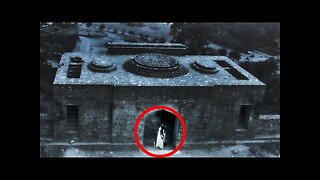 12:23
12:23
World Unearthed
5 months ago11 Creepiest Historical Places
1.86K -
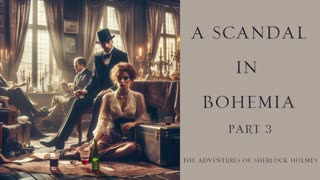 14:26
14:26
Tales in Tranquillity
4 months agoA Scandal in Bohemia - Part 3
29 -
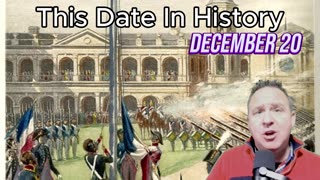 1:56
1:56
RokinSokinBobbyD
5 months agoUnforgettable Events: December 20 in History
152 -
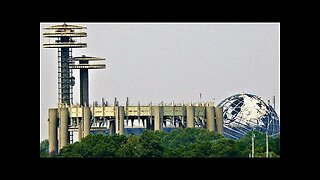 8:52
8:52
WorldUnearthed
4 months ago8 Forgotten Abandoned Places in America
59 -
 12:29
12:29
Barry Zalma, Inc. on Insurance Law
1 year agoHow Russian Immigrants Became Rich
123 -
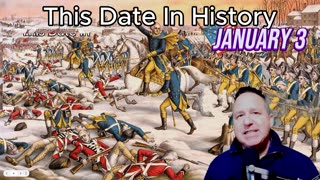 2:04
2:04
RokinSokinBobbyD
5 months agoJanuary 3 In History: Unveiling forgotten events
219 -
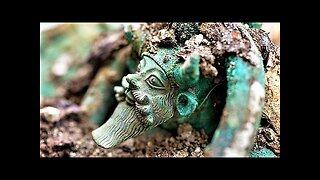 11:08
11:08
World Unearthed
5 months ago11 Unreal Ancient Sites and Artifacts
156 -
 53:54
53:54
SheinSez
11 months agoUS Government supposedly knew about Russia's armed insurrection before Putin -SheinSez 211
2152 -
 1:03:04
1:03:04
Battle4Freedom
3 months agoBlackened American History Part 2 - From Russia with Historical Love
247